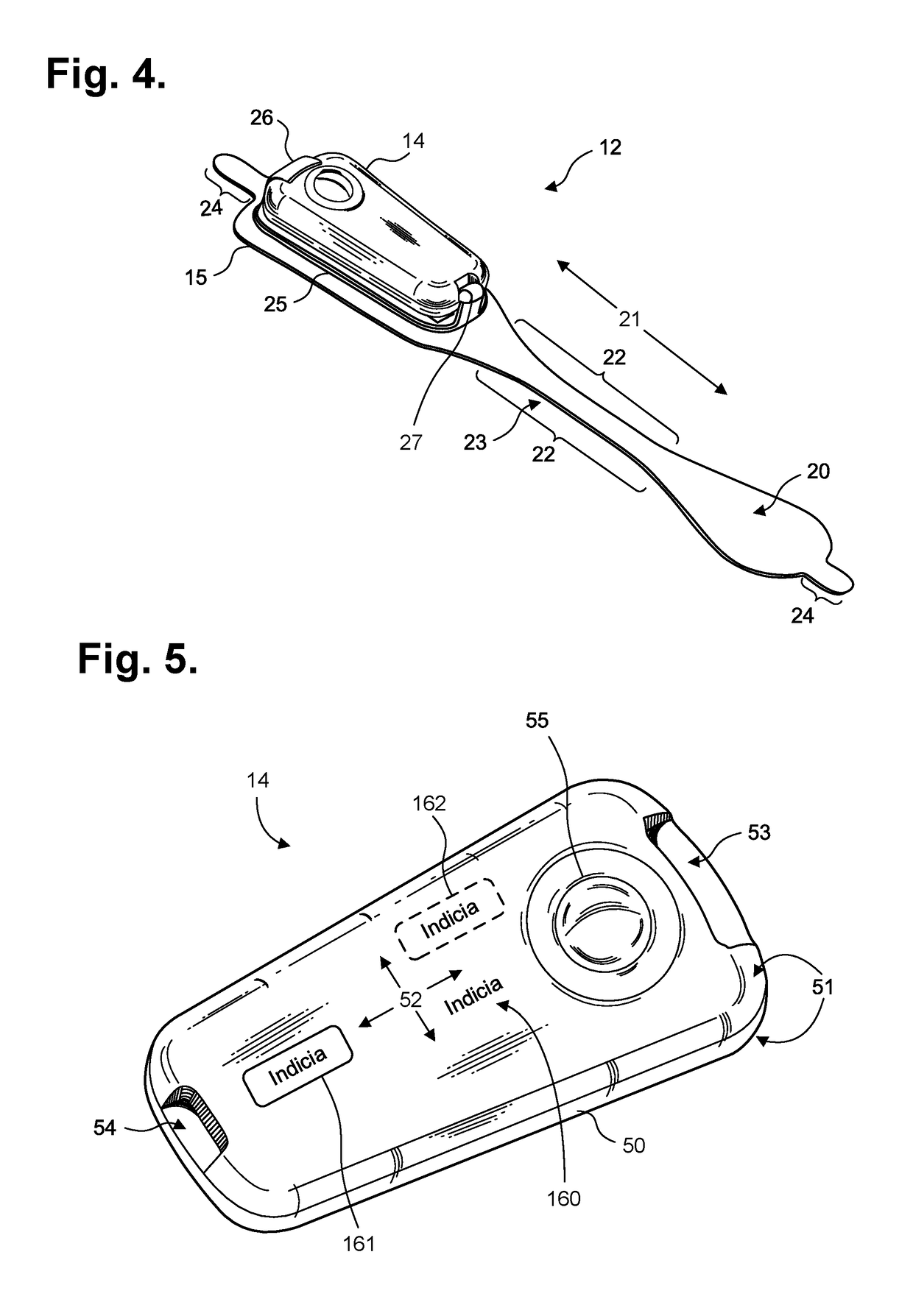ECGs are limited to recording those heart-related aspects present at the time of recording.
For instance, the long-term wear of ECG electrodes is complicated by
skin irritation and the inability of conventional ECG electrodes to maintain continual
skin contact after a day or two.
These factors adversely affect
electrode adhesion and the quality of cardiac
signal recordings.
Moreover, physical movement and clothing impart compressional, tensile, and
torsional forces on
electrode contact points decreasing
signal quality, especially over long recording times. In addition, an inflexibly fastened ECG electrode is prone to dislodgement that often occurs unbeknownst to the patient, making the ECG recordings worthless.
Further, some patients may have skin conditions, such as
itching and
irritation, aggravated by the wearing of most ECG electrodes.
Such replacement or slight alteration in
electrode location can interfere with the goal of recording the
ECG signal for long periods of time.
Finally, such recording devices are often ineffective at recording atrial electrical activity, which is critical in the accurate diagnosis of heart
rhythm disorders, because of the use of traditional ECG recording
electronics or due to the location of the monitoring electrodes far from the origin of the atrial
signal, for instance, the P-wave.
A “looping” Holter (or event) monitor can operate for a longer period of time by overwriting older ECG tracings, thence “recycling” storage in favor of extended operation, yet at the risk of losing crucial
event data.
Holter monitors remain cumbersome, expensive and typically for prescriptive use only, which limits their
usability.
Further, the skill required to properly place the ECG leads on the patient's chest hinders or precludes a patient from replacing or removing the electrodes.
During monitoring, the battery is continually depleted and can potentially limit overall monitoring duration.
These patches have a further limitation because of a small inter-electrode distance coupled to its designed location of application, high on the left chest.
The
electrical design of the ZIO patch and its location make recording high quality atrial signals (P-
waves) difficult, as the location is relatively far from the origin of these low amplitude signals.
Furthermore, this patch is problematical for woman by being placed in a location that may limit
signal quality, especially in woman with large breasts or bosoms.
Both ZIO devices represent compromises between length of wear and quality of
ECG monitoring, especially with respect to ease of long term use, female-friendly fit, and quality of atrial (P-wave) signals.
An
algorithm implemented as an app executed by the smartphone analyzed recorded signals to accurately distinguish pulse recordings during
atrial fibrillation from
sinus rhythm, although such a smartphone-based approach provides non-continuous observation and would be impracticable for long term
physiological monitoring.
Further, the smartphone-implemented app does not provide continuous recordings, including the provision of pre-event and post-event context, critical for an accurate
medical diagnosis that might trigger a meaningful and serious medical intervention.
In addition, a physician would be loath to undertake a surgical or serious
drug intervention without confirmatory evidence that the wearer in question was indeed the subject of the presumed
rhythm abnormality.
Furthermore, as explained supra with respect to the McManus reference, none of these devices provides the context of the arrhythmia, as well as the medico-legal confirmation that would otherwise allow for a genuine medical intervention.
The wearer must take extra steps to
route recorded data to a health care provider; thus, with rare exception, the data is not time-correlated to physician-supervised monitoring nor validated.
Thus, such data that is available today is not actionable in a medically therapeutic relevant way.
To make such data actionable, one must have recorded data that allows a specific
rhythm diagnosis, and a vague recording hinting that something may be wrong with the heart will not suffice.
 Login to View More
Login to View More  Login to View More
Login to View More 


